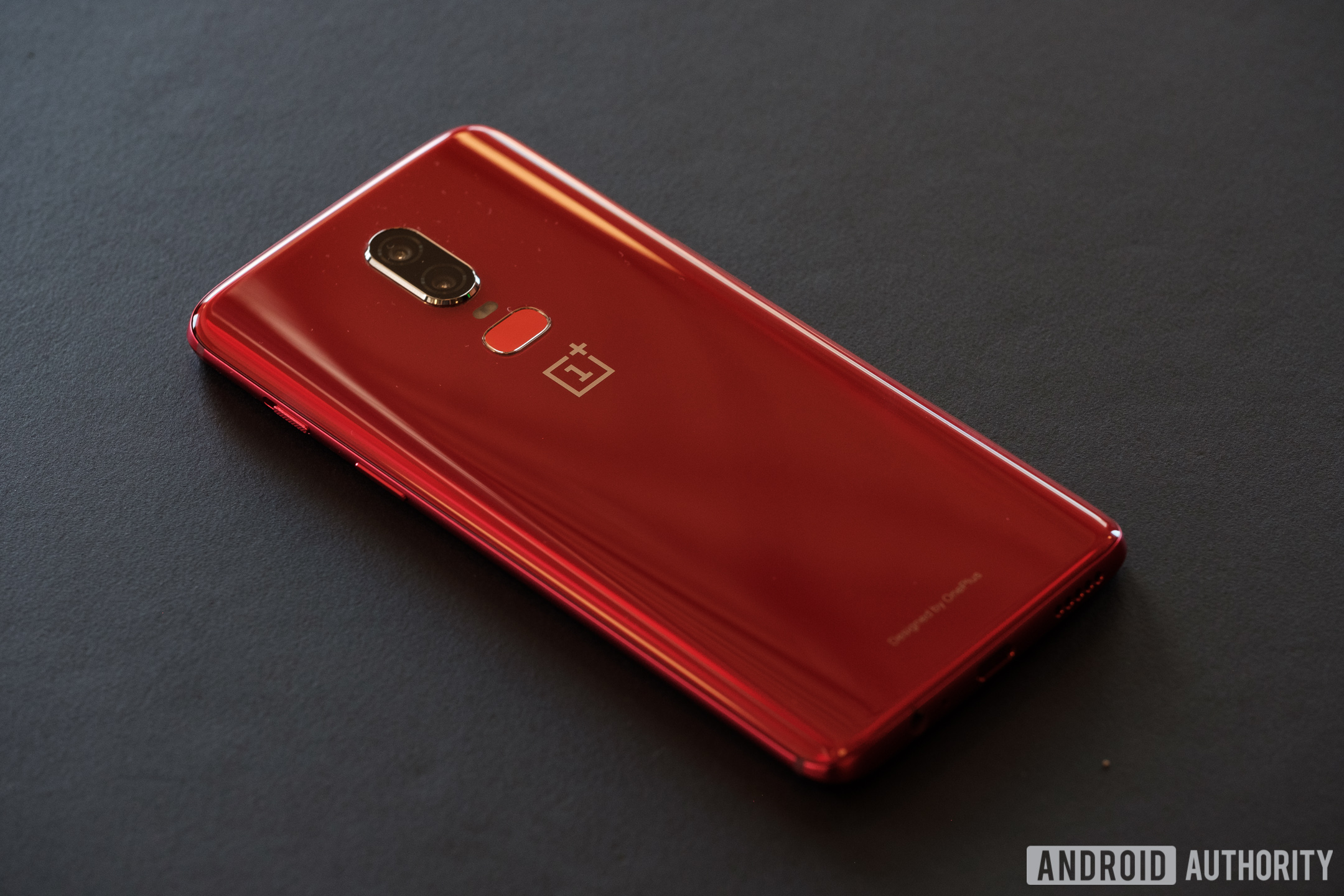We've done plenty of versus features in the past, but this one feels like a real grudge match: The Pocophone F1 vs. the OnePlus 6.
This is such an epic showdown because in many ways Pocophone is positioned to steal a crown that's belonged to OnePlus for a long time.
OnePlus has always been where to turn for flagship specs at mid-range prices. Over time, its handsets have gradually crept up in price, to the point where they're moving out of budget for a lot of their initial audience.

This has made space for the Pocophone F1, which has been getting a lot of attention recently thanks to just how much it can offer for an incredibly low price.
The specs
The OnePlus 6 exemplifies the company's trend toward nicer-but-pricier devices. It is an excellent phone with a beautiful build quality, running on a Snapdragon 845, up to 8GB of RAM, and up to 256GB of storage. It has a large 6.28-inch AMOLED display with an 83.8 percent screen-to-body ratio, and an excellent 1080 x 2280p resolution. There's a dual lens 16MP camera and a 16MP selfie-camera around the front. It also has a 3,300mAh battery.

However, its base model costs $529.
Enter the Pocophone F1. This device boasts the same key specs: the Snapdragon 845, up to 8GB of RAM, and up to 256GB of storage. The screen is similar in size (6.18 inches) and resolution (1080 x 2246), but it's an IPS LCD rather than AMOLED, and therefore less impressive. The primary camera is also a slight downgrade with a 12MP dual lens, though the front-facing camera is actually a decent step up at 20MP. It also has a larger 4,00mAh battery, stereo speakers, splash resistance, and lightning-fast infrared facial recognition.

It's packaged in a slightly cheaper-feeling plastic body than the OnePlus 6's glass and aluminium frame, but it doesn't look bad by any means — especially if you opt for the kevlar-backed version instead.
What makes all the phone really impressive is it all comes for about $300 (the price varies depending on where you look).
So, for more than $200 less, you get the same performance and a bigger battery. The trade-off is the build and the slightly lower megapixel camera. If you don't care about those it seems like a no brainer.
Well not quite. This Pocophone F1 vs. OnePlus 6 showdown isn't over yet!
The caveats
There's very little different in what these devices are actually like to use. They both blaze through apps and games, with ample specs for any task you can throw at them.

Both phones are very fast but the OnePlus 6 actually outperforms the Pocophone F1. Impressive!
In the camera department they're also similar. Their cameras are absolutely reflective of their decent mid-range status. They both do surprisingly well for the price, but fall short of the greatness we see on Galaxy, Pixel, or Apple devices.
A few other considerations may give you pause. The Pocophone F1 runs Android 8.1 Oreo with Xiaomi's MIUI, and the OnePlus 6 just recently received its Android Pie update and runs OnePlus' OxygenOS. Both are just fine, but a lot of people will choose OnePlus for its stock-like experience, though MIUI is actually pretty good too. This difference may just be the clincher for some.

That differentiator becomes even more important when you consider how Xiaomi's recently started sneaking ads into its software. Users are noticing ads on pre-installed apps, as well as the settings menu and more. Apparently, this is to offset the price and they're very subtle — I haven't seen this happen once yet — but that Xiaomi would do this without warning on a device you already bought is pretty uncool. I can't imagine OnePlus pulling a stunt like that.
Xiaomi has recently begun the shady practice of sneaking ads into its software.
There's also a slight issue with streaming. The Pocophone F1 doesn't have Widevine L1, which means you can't stream HD video from Netflix, BBC, and Amazon, instead capped at 540p. Whether that's an issue for you will depend on how much you use those services.
So, who wins?
So who wins the Pocophone F1 vs OnePlus 6 showdown?
It's got to be the OnePlus 6. This is a nicer device to use, with fewer compromises, a fantastic build quality, and no ads.

Despite that, the Pocophone F1 has the better value. I'm honestly not sure the extras you get with the OnePlus are worth over $200.
Words like "flagship," "mid-range," and "budget" are thrown around so much they have almost lost all meaning. Rather than putting everything into neat little categories, it's better to think of this as a spectrum with cheap disposable phones at one end, and premium, luxury devices at another. Better yet, think of it like a buffet where you can pick and choose the specs and features that matter to you, and mix and match to create your own perfect device.
Often, it's not the raw specs that create the perfect Android experience - the devil is in the details
The raw specs don't often create the perfect Android experience. The devil is in details like video playback, splash resistance, or even little things like haptic feedback and how the screen feels, which each user values differently. It's here where the OnePlus 6 excels over the Pocophone F1.

The OnePlus 6 simply sits a little further along the spectrum, with a few more tasty morsels on its plate. The Pocophone F1 is a little better value, but if you have the budget for the OnePlus 6 you'll be able to feel that extra expense in the phone.
That's where come down in the Pocophone F1 vs. the OnePlus 6 debate. Do you agree with our verdict? Let us know in the comments below.
For more faceoffs, why not check out the Pocophone F1 vs. Honor Play.
from Android Authority https://ift.tt/2DLmlyH
via IFTTT

Aucun commentaire:
Enregistrer un commentaire